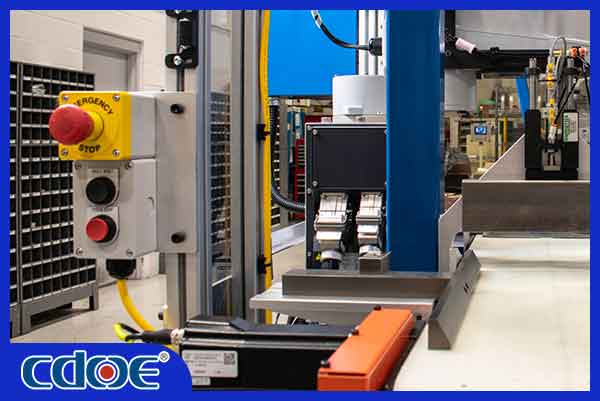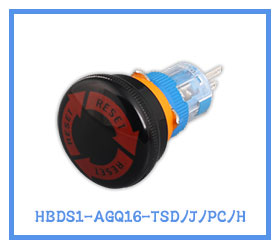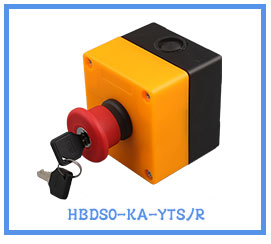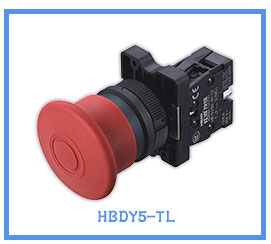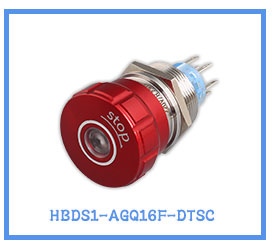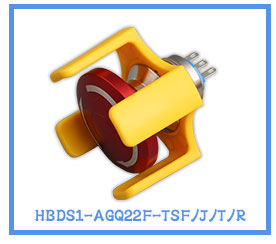In the realm of industrial automation, machinery, and beyond, safety reigns supreme. The Emergency Stop Push Button stands as a critical safety measure, designed to swiftly cut off power in unforeseen circumstances, thereby maximizing the protection of personnel and equipment. As an independent website operator, providing your customers with a comprehensive understanding of emergency stop push buttons not only showcases your expertise but also cultivates trust.
The Paramount Importance of Emergency Stop Push Buttons
Envision a high-speed production line where a sudden equipment malfunction or human error occurs. The consequences could be severe. In such moments, a conspicuous red emergency stop push button can make all the difference, preventing the escalation of accidents. It’s not merely a regulatory requirement; it embodies a company’s commitment to social responsibility and the well-being of its workforce.
Emergency Stop Push Button Connection Explained
The correct wiring of an emergency stop push button is of paramount importance, directly impacting the effectiveness of its safety function. Typically, these buttons feature Normally Closed (NC) contacts. This means that under normal operating conditions, the circuit is complete. When the button is pressed, the contacts open, interrupting the control circuit or main power circuit, thus achieving an emergency stop. Common connection methods include:
- Direct Control Circuit Interruption: The emergency stop button is directly connected in series within the control circuit. Pressing it immediately breaks the control power supply, halting the equipment’s operation.
- Control of Contactors/Relays: The contacts of the emergency stop button control the coil of a contactor or relay. Interrupting the power to this coil then stops the main circuit or higher-level control systems.
- Safety PLC Input: In more complex automated systems, the emergency stop signal is fed into a safety Programmable Logic Controller (PLC) input module. The safety PLC then processes this signal according to safety-rated logic, ensuring a reliable and safe shutdown sequence.
It is crucial to emphasize that the design of emergency stop circuits must adhere to relevant safety standards, ensuring both reliability and redundancy to prevent failure due to a single fault. Engaging qualified electrical engineers for wiring and commissioning is strongly recommended.
What are the primary emergency stop button types that are commonly used?
To cater to diverse application scenarios and requirements, a variety of emergency stop push button types are available:
- Rotary Release Emergency Stop Push Button: This is the most prevalent type, requiring a clockwise or counter-clockwise rotation after being pressed to reset. This design effectively prevents accidental reactivation.
- Emergency Stop Push Button with key: Resetting this type necessitates the use of a specific key, offering enhanced security and often employed in situations where unauthorized reset attempts must be prevented.
- Push Pull Emergency Stop Switches: Resetting involves pulling the button outwards after it has been pressed, providing an intuitive operation.
- Mushroom Head: Characterized by a large operating surface, these buttons facilitate quick and accurate pressing in emergency situations.
- Emergency Stop Switches with Illuminated: Integrating an indicator light, these buttons visually display their status (e.g., lit or flashing when pressed), aiding operators in determining the system’s condition.
- Emergency Stop Switches with Shrouded: Featuring a protective collar or shroud around the button, these designs prevent accidental actuation.
The selection of the appropriate emergency stop push button should consider factors such as the type of equipment, the operating environment, and the required safety integrity level (SIL) or performance level (PL).
How Can You Ensure Best Practices in Emergency Stop push button Installation?
Correct installation is a fundamental prerequisite for ensuring the effectiveness of an emergency stop button. Key installation considerations include:
- Conspicuous and Easily Accessible Location: Emergency stop buttons should be mounted in locations that are immediately visible and readily reachable by operators, typically on prominent areas of the equipment’s control panel.
- High-Visibility Color Coding: Buttons are typically red with a yellow background, creating a stark visual contrast for rapid identification in critical moments.
- Secure Mounting: The button must be firmly affixed to the equipment or control cabinet to prevent loosening or detachment.
- Compliance with Safety Distance Regulations: For larger machinery or production lines, multiple emergency stop buttons may be required, and their spacing must comply with relevant safety standards to ensure adequate coverage.
- Correct and Reliable Wiring: Wiring must be performed accurately according to electrical schematics and applicable standards, ensuring secure and dependable connections.
- Regular Inspection and Testing: Periodic checks and tests of the emergency stop button’s functionality and contact reliability are essential to guarantee its effective operation in an emergency.
Safeguard Your Operations with Our Reliable Emergency Stop Buttons!
With the insights provided above, we trust you now possess a more profound understanding of the significance, connection methods, types, and installation considerations for emergency stop push buttons. When it comes to ensuring operational safety, opting for high-quality, dependable emergency stop buttons is paramount. Our company boasts years of industry expertise, offering a comprehensive range of emergency stop buttons that adhere to international safety standards, effectively meeting the diverse needs of your equipment and application scenarios. Our products offer the following advantages:
- Premium Quality Materials for Enhanced Durability: Manufactured using high-grade materials and highest waterproof level IP67, our buttons are designed to perform reliably in demanding industrial environments.
- Wide Range of Specifications to Meet Diverse Needs: We can provide 16mm, 19mm, 22mm mounting hole sizes, a variety of contact configurations and reset types to meet your specific requirements.
- Compliance with International Safety Standards for Unwavering Reliability: Our products undergo rigorous testing and are UL and CE certified to ensure compliance with strict safety regulations, giving you peace of mind.
- User-Friendly Installation and Maintenance: Our designs prioritize ease of installation and simplified maintenance procedures.
Prioritize the safety of your operations. Contact us today for expert guidance on selecting the ideal emergency stop buttons and to receive a competitive quotation! Click Here to submit your inquiry, and our dedicated team will be delighted to assist you! We eagerly anticipate the opportunity to collaborate with you in creating a safe and efficient operational environment!

